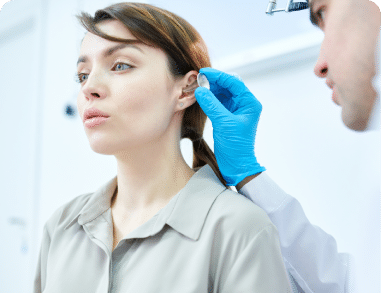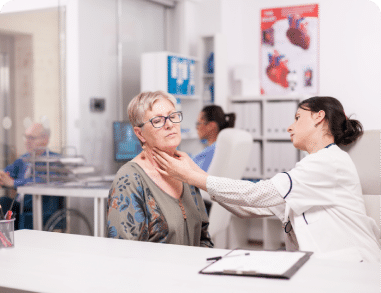What is Videostroboscopy?
Videostroboscopy is a state-of-the-art technique that allows one to examine not only the vocal cords and the surrounding structures, but also to observe how the vocal cords actually function (vibrate).
The videostrobe set-up consists of a stroboscopic unit (light source and microphone), a video camera, an endoscope, and a video recorder. The examination is performed by placing the endoscope in the back of the mouth while gently holding the tongue. This does not go down the throat and most patients tolerate this very well with little or no discomfort; a short acting anesthetic spray can be applied for those who have a sensitive “gag” reflex.
For the approximately 10% of patients that cannot tolerate the oral endoscope, a flexible fiberoptic scope can be used that is passed through the nose after application of topical spray that decongests and anesthetizes – many patients scheduled for videostroboscopy have already had this second technique performed during their initial office visit. While the entire process takes approximately 30 minutes, only about two minutes is actually spent with the endoscope in place. The digital recording of the videoscopy is then reviewed with the patient, after which a report is forwarded to the ordering physician for analysis and diagnosis.
There is no particular preparation for this exam. There is no need for abstaining from food or drink prior to the testing. There is no need to avoid or change your present medication as none of these will have any influence on the procedure.

Typical Stroboscopic Findings
A deviated septum may cause one or more of the following:
- Vocal-fold cysts – benign lesions that more often occur in females, resulting from vocal misuse or over-use; symptoms include hoarseness, increased effort or soreness when speaking, and fatigue.
- Vocal-fold polyps – contrasting from polyps in other parts of the body, vocal-fold polyps are benign lesions resulting from vocal misuse or over-use, possibly formed by the rupturing of small blood vessels as a result of trauma; symptoms include painless hoarseness, intermittent voice breaks, and sensation of a foreign body in the throat.
- Vocal-fold nodules – benign lesions that occur typically in young women and adolescent boys as a result of vocal misuse or overuse and is a well known problem among professional and amateur singers; the primary symptom is painless hoarseness, which worsens after excessive voice use (e.g. cheering at a sporting event) and improves with rest.

- Sulcus vocalis – the thinning or absence of a layer of tissue on the vocal cord required to produce sound. Although the cause is unclear, it is suspected that sulcus vocalis is a developmental disorder which occurs around adolescence, or possibly a long-term result of vocal cord hemorrhaging or cysts; symptoms include harsh hoarseness, difficulty speaking or being heard over background noise, and varying vocal pitch.
If you have any questions concerning your videostroboscopy, please do not hesitate to contact our office.
Explore More Services
Videostroboscopy is a state-of-the-art technique that allows one to examine not only the vocal cords and the surrounding structures, but also to observe how the vocal cords actually function (vibrate).
The videostrobe set-up consists of a stroboscopic unit (light source and microphone), a video camera, an endoscope, and a video recorder. The examination is performed by placing the endoscope in the back of the mouth while gently holding the tongue. This does not go down the throat and most patients tolerate this very well with little or no discomfort; a short acting anesthetic spray can be applied for those who have a sensitive “gag” reflex. For the approximately 10% of patients that cannot tolerate the oral endoscope, a flexible fiberoptic scope can be used that is passed through the nose after application of topical spray that decongests and anesthetizes – many patients scheduled for videostroboscopy have already had this second technique performed during their initial office visit. While the entire process takes approximately 30 minutes, only about two minutes is actually spent with the endoscope in place. The digital recording of the videoscopy is then reviewed with the patient, after which a report is forwarded to the ordering physician for analysis and diagnosis.
There is no particular preparation for this exam. There is no need for abstaining from food or drink prior to the testing. There is no need to avoid or change your present medication as none of these will have any influence on the procedure.
Typical stroboscopic findings:
A deviated septum may cause one or more of the following:
- Vocal-fold cysts – benign lesions that more often occur in females, resulting from vocal misuse or over-use; symptoms include hoarseness, increased effort or soreness when speaking, and fatigue.
- Vocal-fold polyps – contrasting from polyps in other parts of the body, vocal-fold polyps are benign lesions resulting from vocal misuse or over-use, possibly formed by the rupturing of small blood vessels as a result of trauma; symptoms include painless hoarseness, intermittent voice breaks, and sensation of a foreign body in the throat.
- Vocal-fold nodules – benign lesions that occur typically in young women and adolescent boys as a result of vocal misuse or overuse and is a well known problem among professional and amateur singers; the primary symptom is painless hoarseness, which worsens after excessive voice use (e.g. cheering at a sporting event) and improves with rest.
- Sulcus vocalis – the thinning or absence of a layer of tissue on the vocal cord required to produce sound. Although the cause is unclear, it is suspected that sulcus vocalis is a developmental disorder which occurs around adolescence, or possibly a long-term result of vocal cord hemorrhaging or cysts; symptoms include harsh hoarseness, difficulty speaking or being heard over background noise, and varying vocal pitch.
If you have any questions concerning your videostroboscopy, please do not hesitate to contact our office.








